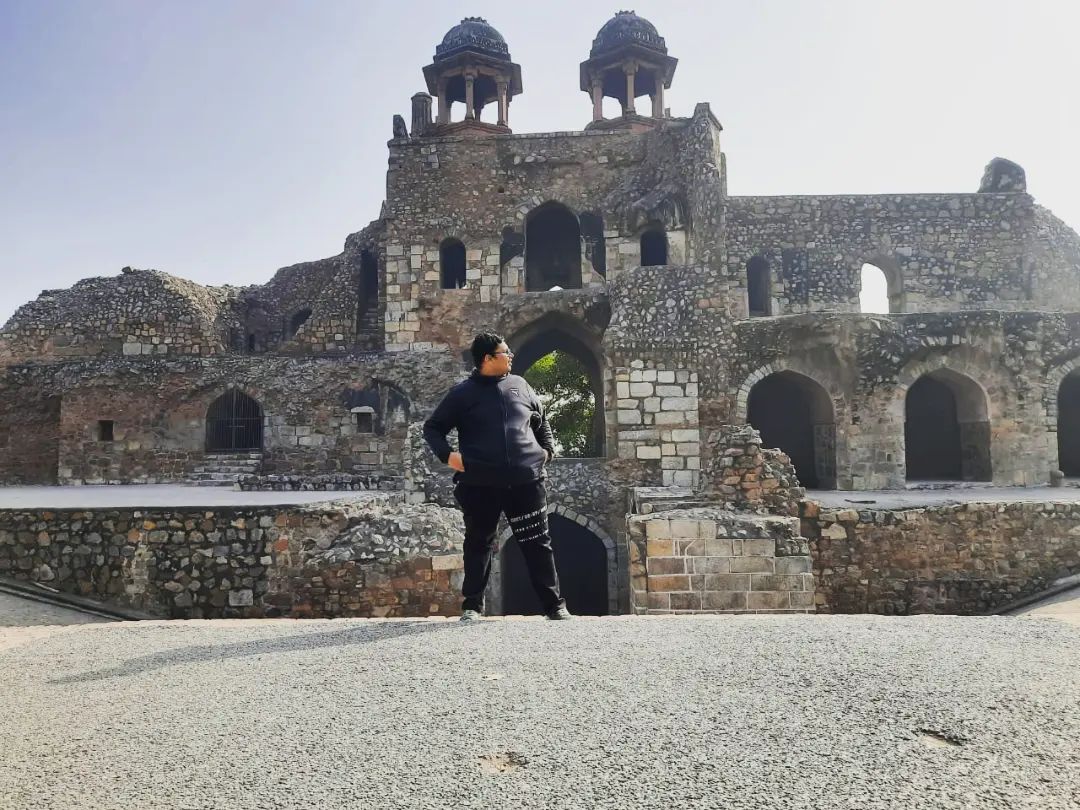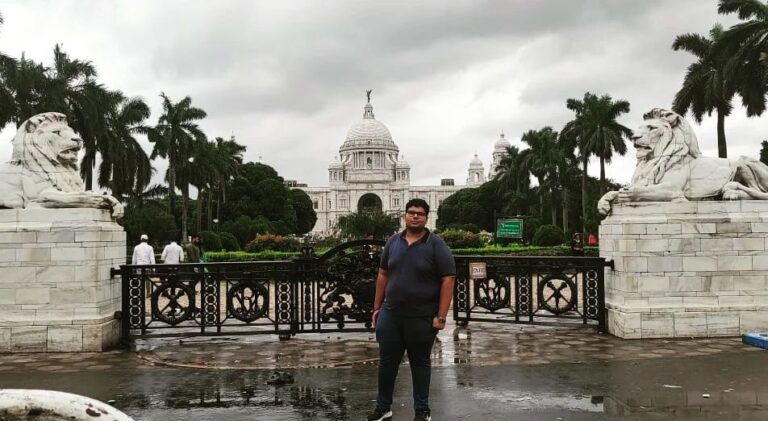MY BLOGS

PURANA QUILLA
Unveiling the Majesty of Purana Quila: A Glimpse into Delhi’s Timeless Citadel
In the heart of Delhi, amidst the bustling modernity, lies a treasure trove of history and architectural grandeur – Purana Quila, or the Old Fort. This magnificent structure stands as a testament to the rich tapestry of India’s past, weaving together tales of empires, conquests, and cultural exchanges that have shaped the subcontinent for millennia. Join us as we embark on a journey through time, exploring the timeless allure of Purana Quila.
A Storied Past:
Purana Quila’s history is as ancient as it is captivating. Believed to have been built on the site of the legendary city of Indraprastha, mentioned in the Indian epic Mahabharata, its origins are steeped in myth and legend. However, its most significant developments occurred during the medieval period.
The construction of the fort, as it stands today, was initiated by the Afghan emperor Sher Shah Suri in the 16th century. He intended it to be the seat of his empire, thus commissioning the fort’s construction on a grand scale. However, Sher Shah’s untimely demise led to the Mughals completing the fort’s construction, adding their own architectural flourishes and making it one of their principal citadels.
Architectural Marvels:
Purana Quila is a marvel of Mughal architecture, blending elements of Islamic, Persian, and Indian styles seamlessly. Encircled by massive walls and protected by robust bastions, the fort exudes an aura of strength and grandeur. Its main entrance, the imposing Bada Darwaza (Big Gate), welcomes visitors with intricate carvings and towering arches, hinting at the splendor within.
Once inside, visitors are greeted by an array of architectural wonders. The Qila-i-Kuhna Mosque, built by Sher Shah Suri, stands as a testament to his architectural prowess, featuring striking red sandstone and marble embellishments. Adjacent to the mosque lies the Sher Mandal, a double-storeyed octagonal tower constructed by Sher Shah, which later served as Humayun’s library and observatory.
Echoes of History:
As one wanders through the labyrinthine corridors and expansive courtyards of Purana Quila, echoes of history reverberate at every turn. The fort has witnessed the rise and fall of empires, from the Afghan rulers to the mighty Mughals and later the British colonialists. It has been witness to grand coronations, bloody battles, and moments of triumph and tragedy that have shaped the destiny of the Indian subcontinent.
One of the most poignant chapters in Purana Quila’s history is the story of Humayun, the second Mughal emperor, who famously lost the fort to the Afghan king Sher Shah Suri, only to regain it years later with the help of the Persian Shah Tahmasp. Humayun’s eventual victory and restoration of the fort marked a turning point in Mughal history, solidifying their rule over North India for centuries to come.
A Timeless Legacy:
Today, Purana Quila stands as more than just a monument of historical significance; it is a living testament to India’s rich cultural heritage and architectural prowess. Its sprawling gardens and picturesque surroundings provide a tranquil oasis amidst the urban chaos, inviting visitors to immerse themselves in centuries-old stories of valor, conquest, and artistic brilliance.
From history enthusiasts and architecture aficionados to casual visitors seeking a glimpse into India’s past, Purana Quila offers something for everyone. Its timeless beauty and captivating aura continue to inspire awe and wonder, reminding us of the enduring legacy of India’s glorious past.
As we bid adieu to this majestic citadel, let us carry with us the echoes of its storied past, preserving and cherishing its legacy for generations to come. For in Purana Quila, the sands of time stand still, beckoning us to unravel the mysteries of India’s vibrant history, one stone at a time.

Victoria Memorial: A Symbol of Elegance and Imperial Legacy
In the heart of Kolkata, amidst the bustling streets and vibrant culture, stands a monument that transcends time and space, a testament to an era of grandeur and opulence – the Victoria Memorial. This architectural masterpiece, with its majestic dome and sprawling gardens, is not merely a structure but a symbol of India’s colonial past and enduring legacy. Join us as we embark on a journey to explore the allure and significance of the iconic Victoria Memorial.
A Glimpse into History:
The Victoria Memorial, conceived in the early 20th century, was built in honor of Queen Victoria, the Empress of India, whose reign marked an era of profound change and transformation for the subcontinent. Designed by Sir William Emerson, the memorial’s construction commenced in 1906 and was completed in 1921, culminating in a monument that seamlessly blends classical European architecture with Indian influences.
Architectural Splendor:
The Victoria Memorial is a breathtaking example of Indo-Saracenic Revival architecture, characterized by its fusion of British and Mughal elements. The monument’s central dome, inspired by the Taj Mahal, rises majestically above the landscape, crowned with a bronze statue of Victory. Surrounding the dome are elegant colonnades, intricate carvings, and ornate balconies, each telling a story of India’s rich history and cultural heritage.
As one ventures inside, they are greeted by a treasure trove of artifacts, paintings, and memorabilia that offer a glimpse into the bygone era of the British Raj. From royal portraits and regal costumes to historical documents and manuscripts, the Victoria Memorial’s museum houses a collection that is as vast as it is captivating, inviting visitors to immerse themselves in the grandeur of India’s colonial past.
Cultural Oasis:
Beyond its architectural magnificence, the Victoria Memorial serves as a cultural oasis in the heart of Kolkata, offering respite from the hustle and bustle of city life. Its sprawling gardens, adorned with fountains, statues, and lush greenery, provide a tranquil sanctuary where visitors can unwind and reconnect with nature amidst the urban chaos.
Throughout the year, the memorial plays host to a myriad of cultural events, including exhibitions, concerts, and festivals, celebrating the rich tapestry of India’s artistic and intellectual heritage. Whether it’s a classical music performance under the stars or an art exhibition showcasing the works of local artisans, the Victoria Memorial serves as a vibrant hub of creativity and expression, fostering a sense of community and belonging for all who visit.
A Timeless Legacy:
As we reflect on the significance of the Victoria Memorial, we are reminded of its enduring legacy as a symbol of India’s colonial past and cultural diversity. It stands not only as a tribute to Queen Victoria but also as a testament to the resilience and spirit of the Indian people, who have embraced their heritage while forging a path towards a brighter future.
In the midst of changing times and shifting paradigms, the Victoria Memorial remains a beacon of elegance and grace, reminding us of the power of architecture to transcend boundaries and unite people across generations and cultures. So, the next time you find yourself in Kolkata, take a moment to visit this iconic monument and experience firsthand the splendor of the Victoria Memorial – a timeless masterpiece that continues to inspire awe and wonder to this day.

MUKTAGIRI
Discovering Muktagiri: A Spiritual Haven Amidst Nature’s Bounty
Nestled amidst the lush greenery of the Satpura mountain range in the heart of India lies a hidden gem waiting to be explored – Muktagiri. Far from the hustle and bustle of city life, this serene destination offers not only a retreat into nature’s embrace but also a profound spiritual journey for those who seek solace and enlightenment. Join us as we embark on a virtual expedition to unravel the tranquil beauty and spiritual richness of Muktagiri.
Embraced by Nature:
Muktagiri is a picturesque hill station located in the Betul district of Madhya Pradesh, renowned for its breathtaking landscapes and verdant surroundings. As you ascend the winding roads leading to this idyllic retreat, you are greeted by panoramic vistas of rolling hills, dense forests, and cascading waterfalls that seem to stretch into eternity.
The air is crisp and invigorating, carrying with it the fragrance of wildflowers and the symphony of chirping birds. Muktagiri’s tranquil ambiance provides the perfect setting for introspection and rejuvenation, offering a respite from the chaos of modern life.
A Sanctuary of Spiritual Awakening:
Beyond its natural splendor, Muktagiri holds a special place in the hearts of devotees from across the country. This sacred pilgrimage site is home to a cluster of Jain temples nestled amidst the hills, each adorned with intricate carvings and ancient architecture that speak volumes about the region’s rich cultural heritage.
The centerpiece of Muktagiri’s spiritual landscape is the Shri Digambar Jain Siddha Kshetra, dedicated to the revered Jain Tirthankaras. Pilgrims flock to this holy site to pay homage to the divine and seek blessings for spiritual fulfillment and enlightenment. The tranquil ambiance of the temples, coupled with the serene surroundings, creates an atmosphere conducive to meditation and self-reflection.
Traversing the Path of Enlightenment:
For those seeking a deeper connection with the divine, Muktagiri offers the opportunity to embark on a spiritual journey unlike any other. The winding pathways that meander through the hills provide pilgrims with a chance to engage in Pradakshina – a traditional practice of circumambulating sacred sites as an act of reverence and devotion.
As you traverse these paths, enveloped by the tranquility of nature, you can’t help but feel a sense of peace and serenity wash over you. Each step brings you closer to a state of inner harmony and enlightenment, as you leave behind the worries of the world and immerse yourself in the divine presence that permeates the air.
Preserving the Legacy:
Muktagiri’s spiritual significance is not lost on the local community, who have taken great strides to preserve and protect this sacred sanctuary for future generations. Efforts are underway to promote eco-friendly practices and sustainable tourism initiatives that ensure the region’s natural beauty remains unspoiled for years to come.
As we bid adieu to this tranquil haven, let us carry with us the memories of Muktagiri’s serene landscapes and spiritual sanctity. Whether you seek solace in nature’s embrace or yearn for spiritual enlightenment, this hidden gem offers a sanctuary where the soul can find peace amidst the chaos of life.
